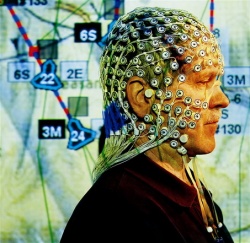Difference between revisions of "Eight consciousnesses"
| Line 1: | Line 1: | ||
[[File:G-technology.jpg|thumb|250px|]] | [[File:G-technology.jpg|thumb|250px|]] | ||
{{Seealso|Eight Consciousnesses}} | {{Seealso|Eight Consciousnesses}} | ||
| − | + | [[eight consciousnesses]] | |
[八識] ( Jpn hasshiki ) | [八識] ( Jpn hasshiki ) | ||
| Line 8: | Line 8: | ||
: (1) [[sight]]-[[consciousness]], | : (1) [[sight]]-[[consciousness]], | ||
: (2) [[hearing]]-[[consciousness]], | : (2) [[hearing]]-[[consciousness]], | ||
| − | : (3) smell-[[consciousness]], | + | : (3) {{Wiki|smell}}-[[consciousness]], |
| − | : (4) taste-[[consciousness]], | + | : (4) {{Wiki|taste}}-[[consciousness]], |
| − | : (5) touch-[[consciousness]], | + | : (5) {{Wiki|touch}}-[[consciousness]], |
: (6) [[mind-consciousness]], | : (6) [[mind-consciousness]], | ||
: (7) [[mano-consciousness]], | : (7) [[mano-consciousness]], | ||
: (8) [[alaya-consciousness]]. | : (8) [[alaya-consciousness]]. | ||
| − | The concept of [[eight consciousnesses]] was set forth by the [[Consciousness-Only school]]. The first six | + | The concept of [[eight consciousnesses]] was set forth by the [[Consciousness-Only school]]. The first [[six consciousnesses]]—[[sight]], [[hearing]], {{Wiki|smell}}, {{Wiki|taste}}, {{Wiki|touch}}, and [[thought]]—were originally expounded by the [[Hinayana]] schools. The [[Consciousness-Only school]] of [[Mahayana]] [[tradition]] delved into the {{Wiki|subconscious}} and postulated the seventh and eighth [[consciousnesses]]. The school named them, respectively, the [[mano consciousness]] and the [[alaya-consciousness]], and formulated the [[doctrine]] of [[eight consciousnesses]]. The [[mano-consciousness]] is the [[realm]] of the [[ego]], or where the [[sense]] of [[self]] resides. The [[Sanskrit]] word [[manas]], from which [[mano]] of [[mano-consciousness]] derives, means to ponder. This [[consciousness]] performs the function of abstract [[thought]] and discerns the [[inner world]]. The [[alaya-consciousness]] is regarded as the source of one's [[body]] and [[mind]] as well as the natural [[world]]. [[Alaya]] means [[abode]], [[dwelling]], or [[receptacle]]. It is also called the [[storehouse consciousness]] because all [[karma]] created in the present and previous lifetimes is stored there. |
See also [[alaya consciousness]]; [[mano-consciousness]]. | See also [[alaya consciousness]]; [[mano-consciousness]]. | ||
Revision as of 21:39, 8 August 2013
- See also :
- See also :
eight consciousnesses [八識] ( Jpn hasshiki )
Eight kinds of discernment:
- (1) sight-consciousness,
- (2) hearing-consciousness,
- (3) smell-consciousness,
- (4) taste-consciousness,
- (5) touch-consciousness,
- (6) mind-consciousness,
- (7) mano-consciousness,
- (8) alaya-consciousness.
The concept of eight consciousnesses was set forth by the Consciousness-Only school. The first six consciousnesses—sight, hearing, smell, taste, touch, and thought—were originally expounded by the Hinayana schools. The Consciousness-Only school of Mahayana tradition delved into the subconscious and postulated the seventh and eighth consciousnesses. The school named them, respectively, the mano consciousness and the alaya-consciousness, and formulated the doctrine of eight consciousnesses. The mano-consciousness is the realm of the ego, or where the sense of self resides. The Sanskrit word manas, from which mano of mano-consciousness derives, means to ponder. This consciousness performs the function of abstract thought and discerns the inner world. The alaya-consciousness is regarded as the source of one's body and mind as well as the natural world. Alaya means abode, dwelling, or receptacle. It is also called the storehouse consciousness because all karma created in the present and previous lifetimes is stored there.
See also alaya consciousness; mano-consciousness.
